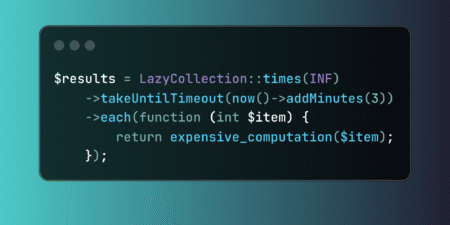A quick overview of all changes and news from the entire Total.js Platform. Read more about our work. Source: Read…
Libraries & Frameworks
The Shift-Right approach is rapidly becoming a cornerstone of modern quality engineering, offering enterprises a smarter way to ensure software excellence post-deployment. Unlike the traditional Shift-Left model, which focuses on early testing in the development lifecycle, Shift-Right emphasizes continuous validation in production using real-user data and behavior insights. This strategy helps organizations improve customer experience, resolve issues faster, and make data-informed decisions with greater precision. Read the blog now
The post Shift-Right Testing Isn’t Optional Here’s How AI and Real Users Are Making It Work first appeared on TestingXperts.
Please keep in mind, I’m just trying to get points so I can join a particular group. I need 20. But if you feel like you could give a decent answer, I’m all ears.
The code architecture thing being bugless is more of me perusing through stack exchange and seeing so many “How come when I do this this happens” or “when I place this and I’ve been doing it for years. This happens but I can’t do it now with this new thing?”
It seems like a lot of of stuff not working cuz they’re no longer compatible or something’s “flipped” incorrectly or needs to be “connected” to the correct calibrator (I’m sure I’m saying gibberish), but the idea is essentially the same. Why are there so many tiny technical incompatibilities? Isn’t there some form of architecture that just limits this or makes it impossible to happen?
Someone should get on that (I ask ignorantly)
Just curious: I’ve always written tests in a declarative style especially with page object model. But doesn’t this break the single responsibility principle? I used to write things with an imperative style but maintenance was a headache and it was harder to read.
So my question is: Is there a general consensus of which we should be using in our tests? And if it IS declarative, doesn’t that break SOLID (specifically the S) principles?
Transform Laravel database queries with reusable scope patterns that encapsulate common filtering logic. These powerful abstractions enable elegant query composition…
Caleb Porzio presented Livewire 4 on the second day of Laracon US 2025, unveiling the next major version of Livewire.…
This blog shows how to install the Total.js IoT platform step by step, including setting up the database, downloading the…
In today’s rapidly evolving software testing and development landscape, ensuring quality at scale can feel like an uphill battle without the right tools. One critical element that facilitates scalable and maintainable test automation is effective configuration management. YAML, short for “YAML Ain’t Markup Language,” stands out as a powerful, easy-to-use tool for managing configurations in
The post YAML for Scalable and Simple Test Automation appeared first on Codoid.
Optimize Laravel API routes with shallow nesting to reduce URL complexity while preserving resource relationships. This approach eliminates redundant parent…
Useful Laravel links to read/watch for this week of July 31, 2025. Source: Read MoreÂ
Nuno Maduro was the second speaker at Laracon US 2025 on Tuesday, unveiling new features for the upcoming Pest v4.0.…
Control long-running Laravel data processing operations with LazyCollection timeout methods. These tools enable efficient dataset handling within time constraints, preventing…
The Laravel passgenerator package allows you to create wallet passes compatible with Apple Wallet easily. The post Create Apple Wallet…
Starting July 30, 2025, JetBrains is making Laravel Idea free for PhpStorm users. The post The Laravel Idea Plugin is…
Post Content Source: Read More
Have you ever wondered why some software teams are consistently great at handling unexpected issues, while others scramble whenever a bug pops up? It comes down to preparation and more specifically, software testing technique known as bebugging. You’re probably already familiar with traditional debugging, where developers identify and fix bugs that naturally occur during software
The post Master Bebugging: Fix Bugs Quickly and Confidently appeared first on Codoid.
Optimize Laravel application performance using built-in measurement tools that compare execution times across different implementations. These utilities provide accurate timing…
Memoize is a lightweight PHP library that simplifies function caching and memoization. It can help boost your application’s performance by…
Laracon US 2025 kicked off today at 9:30 central time in Denver, CO! If you aren’t at the live venue,…
Sanitization library for PHP and the Laravel framework. Source: Read MoreÂ







